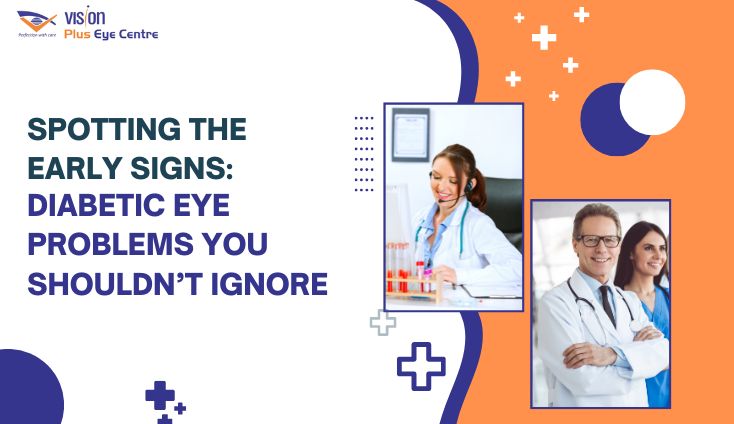
Diabetes is a pervasive health condition that affects millions worldwide. While managing blood sugar levels is a priority for those with diabetes, it’s crucial not to overlook the potential impact on eye health. Diabetic eye problems can lead to serious complications, including vision loss, if not addressed promptly. In this comprehensive guide, we will explore the early signs of diabetic eye issues that individuals with diabetes should be aware of and should not ignore.
Diabetic Eyecare | Diabetic Eye Disease
Understanding the Link between Diabetes and Eye Health:
Diabetes, especially when uncontrolled, can have a profound impact on various organs, including the eyes. One of the primary concerns is the development of diabetic retinopathy, a condition where elevated blood sugar levels damage the blood vessels in the retina. Additionally, diabetes increases the risk of other eye issues such as glaucoma and cataracts. Recognizing the early signs is essential for timely intervention.
- Blurred Vision and Fluctuating Eyesight:
One of the initial indicators of diabetic eye problems is blurred vision. Individuals may notice difficulty focusing or experience fluctuations in eyesight. This occurs due to changes in the fluid levels within the eye caused by diabetes-induced blood vessel damage. If you find your vision isn’t as sharp as it used to be, it’s time to consult with an eye care professional.
- Floaters and Dark Spots:
Diabetic retinopathy can lead to the appearance of floaters—tiny specks or dark spots that seem to float across your field of vision. These are caused by bleeding in the eye, indicating damage to the blood vessels. If you notice an increase in floaters or the sudden appearance of dark spots, it’s crucial to seek immediate medical attention.
- Difficulty Seeing at Night:
Diabetes can affect the eyes’ ability to adjust to low light conditions. If you find yourself struggling to see clearly at night or in dimly lit environments, it might be an early sign of diabetic eye problems. This could indicate issues such as cataracts, common among those with diabetes.
- Eye Pain or Pressure:
Persistent eye pain or a feeling of pressure within the eyes could be a sign of increased intraocular pressure, a potential symptom of glaucoma. Individuals with diabetes have an elevated risk of developing glaucoma, making regular eye examinations crucial for early detection and management.
- Sensitivity to Light:
Increased sensitivity to light, known as photophobia, can be associated with diabetic eye complications. It may manifest as discomfort or a need to shield the eyes from even moderate light levels. This sensitivity can result from various conditions, including inflammation of the eyes.
Early Intervention is Key:
Recognizing these early signs is the first step, but taking prompt action is equally important. Ignoring these symptoms may lead to the progression of diabetic eye problems and irreversible damage to the eyes. Here’s what you can do to protect your vision:
- Regular Eye Exams: Schedule comprehensive eye examinations at least once a year, or as recommended by your eye care professional. These exams can detect early signs of diabetic retinopathy and other eye issues, allowing for timely intervention.
- Blood Sugar Control: Manage your diabetes effectively by monitoring and controlling blood sugar levels. Consistent blood sugar control is a crucial factor in preventing and slowing down the progression of diabetic eye problems.
- Healthy Lifestyle Choices: Adopting a healthy lifestyle can positively impact both diabetes management and eye health. Maintain a balanced diet, engage in regular physical activity, and avoid smoking, as these habits contribute to overall well-being, including eye health.
- Prompt Medical Attention: If you experience any changes in your vision or notice the early signs mentioned, don’t delay seeking medical attention. Early intervention can significantly improve outcomes and prevent further complications.
Conclusion:
Spotting the early signs of diabetic eye problems and taking proactive steps is vital for preserving vision and maintaining overall eye health. Regular eye examinations, blood sugar control, and a healthy lifestyle are crucial components of a comprehensive approach to managing diabetes and its potential complications. By staying vigilant and addressing these early signs promptly, individuals with diabetes can protect their eyesight and enjoy a higher quality of life. Remember, your eyesight is a precious gift—don’t ignore the signs that it might be at risk.
Call Now at 0120-2481481, 2480480 +91 88003 13134 or email us at info@visionplus.net.in.
Book an Online Appointment: https://visionplus.net.in/contact/

